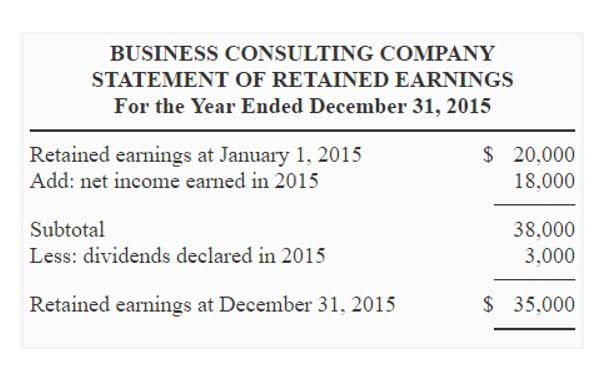
The company must recognize a liability because it owes the customer for the goods or services the customer paid for. Companies of all sizes finance part of their ongoing long-term operations by issuing bonds that are essentially loans from each party that purchases the bonds. This line item is in constant flux as bonds are issued, mature, or called back by the issuer. Liability generally refers to the state of being responsible for something. Tax liability can refer to the property taxes that a homeowner owes to the municipal government or the income tax they owe to the federal government. A retailer has a sales tax liability on their books when they collect sales tax from a customer until they remit those funds to the county, city, or state.
Examples

Hence, when salaries is paid to workers, we make an entry on the debit side of the salaries account. Usually, but not always, no entries are made on the credit side of the accounts kept for expenses. For example, the amount of capital of Mr. John on the first day of the accounting period will be shown on the credit side of John’s Capital Account. To effectively handle your business liabilities, you should optimize your finance workflow.

Use The Right Software To Manage Liabilities In Your Startup

Current liabilities are due within a year and are often paid using current assets. Non-current liabilities are due in more than one year and most often include debt repayments and deferred payments. By far the most important equation in credit accounting is the debt ratio. It compares your total liabilities to your total assets to tell you how leveraged—or, how burdened by debt—your business is. Because most accounting these days is handled by software that automatically generates financial statements, rather than pen and paper, calculating your business’ liabilities is fairly straightforward.
- Long-term liabilities include areas such as bonds payable, notes payable and capital leases.
- High levels of debt can lead to increased interest expenses, impacting profitability and potentially leading to insolvency.
- Different types of liabilities are listed under each category, in order from shortest to longest term.
- The following rules of debit and credit are applied to record these increases or decreases in individual ledger accounts.
- These accounts capture the financial obligations that the entity is liable for and must fulfill in the future.
- For a bank, accounting liabilities include a savings account, current account, fixed deposit, recurring deposit, and any other kinds of deposit made by the customer.
- The higher it is, the more leveraged it is, and the more liability risk it has.
What are the different types of liabilities found on a balance sheet?
Liabilities in financial accounting need not be legally enforceable; but can be based on equitable obligations or constructive obligations. An equitable obligation is a duty based on ethical or moral considerations. A constructive obligation is an obligation that is implied by a set of circumstances in a particular situation, as opposed to a contractually based obligation. Simply put, a business should have enough assets (items of financial value) to pay off its debt. Some loans are acquired to purchase new assets, like tools or vehicles that help a small business operate and grow. Another popular calculation that potential investors or lenders might perform while figuring out the health of your business is the what is a liability account in accounting debt to capital ratio.
- Companies segregate their liabilities by their time horizon for when they’re due.
- A contingent liability only gets recorded on your balance sheet if the liability is probable to happen.
- And if your business does have debt, you’re going to have liabilities.
- These repayments can take many forms, including cash payments, the delivery of goods and services, or other forms of financial asset transfers.
- Long-term liabilities are debts that take longer than a year to repay, including deferred current liabilities.
Related Term or Concept 2: Long-term Liabilities
These liabilities are extremely tricky to manage because as these are due within a year, the management of the company needs to ensure that it possesses ample liquidity to pay current liabilities. Liabilities in accounting are defined as a sacrifice of future economic benefits a company is under obligation to perform as a result of the past transactions with a different entity. For example, the amount of cash in hand on the first day of the accounting period is recorded on the debit side of the cash in hand account.
The money borrowed and the interest payable on the loan are liabilities. If the business spends that money to acquire equipment, for example, the purchases are assets, https://www.instagram.com/bookstime_inc even though you used the loan to purchase the assets. Assets have a market value that can increase and decrease but that value does not impact the loan amount. AT&T clearly defines its bank debt that’s maturing in less than one year under current liabilities.
- Keep in mind your probable contingent liabilities are a best estimate and make note that the actual number may vary.
- Every startup owner must be keenly aware of their business liabilities during the early stages and beyond.
- Assets and liabilities are treated differently in that assets have a normal debit balance, while liabilities have a normal credit balance.
- These expenses include items such as wages, rent, utilities, and other expenditures necessary to keep the business running smoothly.
- Understanding when and how much you’ll need to pay toward your debts helps you plan your cash needs effectively.
- Financial liabilities can be either long-term or short-term depending on whether you’ll be paying them off within a year.
Business Loans And Borrowings

A company which is unable to pay https://www.bookstime.com/ off long term liabilities as and when they become due, indicates a solvency issue with the business or it signals a crisis within the business. Financial liabilities are classified based on amortization of that particular liability by taking into account the fair value of the liability on profit or loss terms. A financial liability may also be classified based on the nature of that financial product.

In spite of all the discussion surrounding these terms, we can also say that they are the fundamental operators of accounting, which underpin the subject. Similarly, the word “credit” has its historical roots in the Latin word credere, meaning “to believe.” In accounting, this is often abbreviated as “Cr.” Historically, the word “debit” derives from the Latin word debere, which means “to owe.” In accounting, this has been shortened to “Dr.” Using the right accounting tools and software can greatly help in managing liabilities.